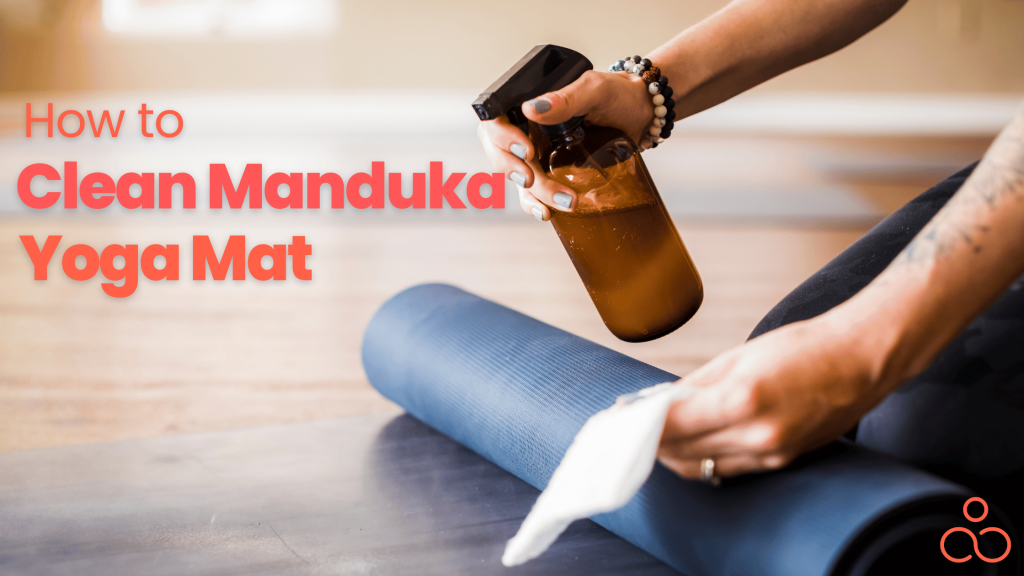Buying a Manduka mat is quite an investment, so you must ensure you look after it properly. If you think you can treat your Manduka mat just like a regular yoga mat and throw it in the wash, then you’re wrong because this could be a disaster for your expensive purchase. That’s why we’re here to guide you on the correct way on how to clean Manduka yoga mat, so you can keep it in peak condition.
Why Are Manduka Mats Good?
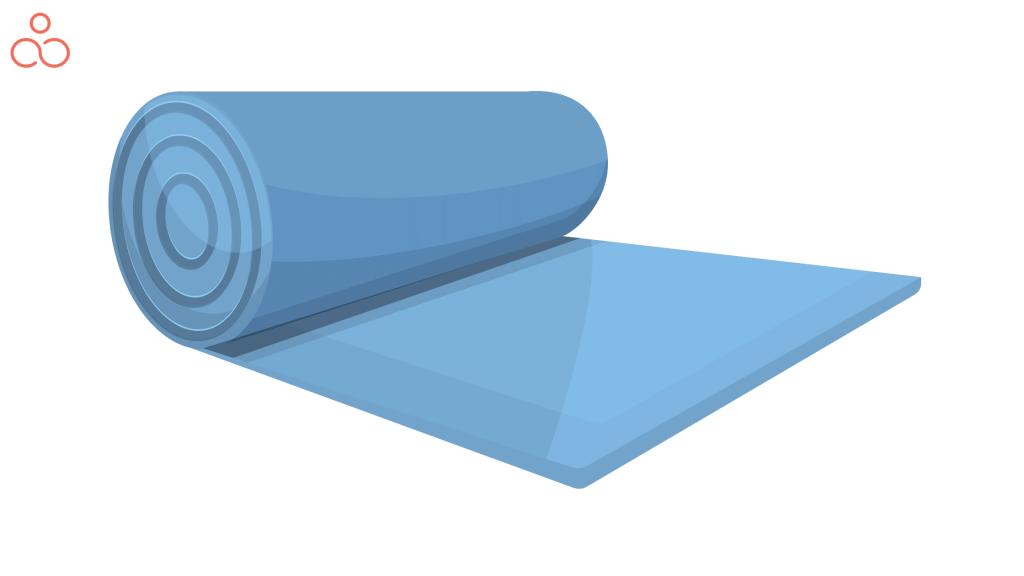
Anyone looking for a top-notch yoga mat with excellent grip, cushioning, and long-lasting material should take a peek at The Manduka mat. It’s a luxurious option that offers a solid yet buttery feeling and wears in nicely. Though it might be a bit budget-friendly, it is ideal for those who want a more eco-friendly option. Manduka’s mats are either crafted from PVC, a hard-wearing, moisture-resistant plastic or natural rubber. Both materials guarantee incredible traction and won’t absorb sweat, keeping your mat looking and feeling brand-new for years. The Manduka Pro has plenty to love, from its superior grip for Ashtanga yoga to its 6mm padding for maximum cushioning, there’s no shortage of features here. Plus, it’s available in many colours, so you can find the perfect fit, to stretch comfortable in the cobra pose. And, best of all, it’s a mat built to last.
The 3R principle
Whether you’re looking to give your mat a quick spritz of freshness or you need to take some extra steps to restore and preserve it, we’ve got you covered! Our 3 Rs—Refresh, Restore, and Rinse-give you three simple and effective ways to keep your mat looking and smelling its best.
Refresh
This helps in making all yoga mats smell soothing and spotless for extended periods. It is safe for all mat materials.
Restore
This helps nourish, revive, and increase your yoga mat’s life expectancy. However, it is only used for regular elastic mats once per month.
Rinse
This helps in eliminating 99.9% microscopic organisms and is safe for all mat types except GRP® Series. It includes all Natural plant-based mat cleaners.
Steps of cleaning
Step 1
Take it or make it
If you want to go for a quick and easy solution, plenty of readymade Manduka cleaners are available. But if you want to try your hand at DIY, you can easily make your own cleaner using everyday kitchen items. It’s up to you to decide which route is best for you and your yoga mat.
Step 2
Spray it and spread it
Once you’ve chosen your cleanser, it’s time to get cleaning! Manduka suggests wiping down your yoga mat to remove dirt and then coating the entire surface with a cleaner. To ensure you cover the whole surface and get an even spread, spritz a damp cloth with your chosen cleanser and leave it like that for at least 10 minutes. After that, give everything a good scrub, and you’ll be done in no time.
Step 3
Wait, cause it’s worth it
Alright, you’re almost done! Once you’ve wiped your mat down, it’s time to let it air dry. Hang it somewhere at your convenience, and then wait about 30 to 60 minutes to use it again. Trust us, you’ll see a massive difference in the cleanliness of your mat, so it’s worth the effort.
Two Variations of Yoga Mat Cleaners
Why just buy a yoga mat spray when you can whip up your own unique concoction? We’ve put together a list of home-made sprays and ready-made sprays so you can customise your mat to fit your preferences. Get creative and make your yoga practice even more enjoyable!
1. Homemade yoga mat cleaners
Cleaning your Manduka mat is simple and only takes a few minutes; you only need a few ingredients! Let’s see what these ingredients can be:
- Using vinegar
Get your spray bottle ready, and clean your yoga mat with this unique vinegar concoction! All you need is 1 part white vinegar and 4 parts water. Add up to 20 drops of tea tree oil for extra germ-fighting power! This vinegar solution is just what you need to break down dirt, grease, and grime on your mat. Make sure to refresh the solution every few weeks, and you’re all set to get your yoga on!
- Using lemon juice
If you don’t have vinegar, don’t worry – lemon juice can work too! Both solutions have acids that can get rid of stubborn stains and guck. They also contain antimicrobial, antifungal, antibiotic, and antiseptic properties. Perfect for a deep clean!
- Using baking soda
Need to get rid of pesky odours on your Manduka yoga mat? Try this hassle-free method. Mix 1 cup of water and 1 teaspoon of baking soda in a spray bottle and it’s all ready to be used. Baking soda is an excellent deodorizer that helps remove tough stains and completely banishes unpleasant scents. Give it a try, and say goodbye to smelly mats!
- Using warm water and mild dish soap
If you want a deep clean, grab a medium-sized basin and fill the container with warm water and several drops of dishwashing liquid. This technique won’t require unique ingredients, and you most likely have all the ingredients you need right in your own kitchen!
- Using tea tree essential oil
Tea tree oil can be your secret weapon when cleaning your yoga mat. It is a natural antiseptic, antifungal, and antibiotic. To make your own cleaning solution, add two drops of this essential oil to 2 to 4 ounces of filtered water in a spray bottle and give it a good shake. Voila! You’ve got yourself a natural, aromatically pleasing cleaning solution.
2. Readymade yoga mat cleaners
Which cleaner to use on your Manduka mat? We’ve got the scoop! Check out the details below, and you’ll be ready to pick the right one and get cleaning. For more info, jump on down below:
- All-purpose Mat Wash
It is ideal for keeping the Manduka PRO Series range of yoga mats and other brands clean. This yoga mat wash has three fragrances: Tranquil Lavender, Energising Gingergrass, and Soothing Citrus. It uses certified organic essential oils, vegetable oil-based surfactants, phosphate-free chelating agents, and water to get the job done.
- Natural Rubber Yoga Mat Restore
Got a Manduka eKO or any other rubber yoga mat? You need to check out Manduka’s Natural Rubber Yoga Mat Restore! This ginger grass cleaner will help keep your carpet performing like new. According to Manduka, you should use this spray once a week and leave it on your mat for 5 minutes before wiping it off. It’s made with natural essential oils, and 100% naturally derived ingredients. Now that’s a mat-maintaining win!
- Manduka Yoga Mat Wash & Refresh
Don’t let sweat and dirt ruin your yoga flow! Check out the Manduka Yoga Mat Wash and Refresh – a 100% Natural Essential Oil Yoga Mat Cleaning Spray – to keep your mat clean and smelling fresh. After every class, give your Manduka mat a spritz and let the solution sit for 1-2 minutes before wiping it off. Keep your mat looking and feeling its best!
- Manduka Botanical Cleaner
Say goodbye to strong chemical smells and harsh bleach while cleaning your yoga mat – Manduka’s Botanical Cleaner is here to save the day! This plant-based solution has a pleasant thyme oil scent. It is highly effective, killing 99.9% of bacteria – no rinsing or wiping required! Get your mat sparkling with the Botanical Cleaner and enjoy the calming aroma.
10 Tips on How to Clean Manduka Yoga Mat
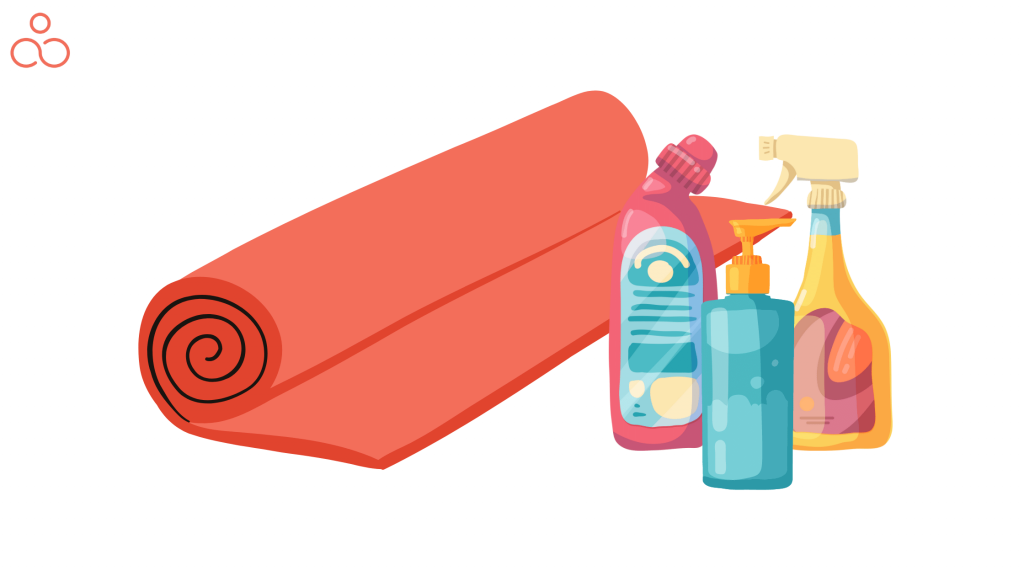
Here are a few tips to keep them in top condition:
- Clean your yoga mats calmly, deodorise, recondition, and thoroughly rinse.
- To clean your yoga mat correctly, create a mixture of a few drops of dish soap and warm water in a spray bottle.
- Spray the mat and scrub it firmly with a microfiber cloth.
- Be gentle with the scrubbing so as not to damage the mat’s naturally adhesive surface.
- Also, make sure to clean both sides.
- When finished, rinse the mat with warm water and let it air dry.
- Make sure to clean your mat at least once a month with soap and water.
- Adhering to the routine of cleaning it once a month will keep your mat in tip-top shape and free of any mess.
- Even if there’s no lousy scent, waiting for it to start smelling means it has already absorbed a lot of dirt and sweat, which can transfer to your body each time you use it.
- With proper cleaning, your mat will stay in good condition and perform optimally for a more extended period.
Know your mat before you clean them
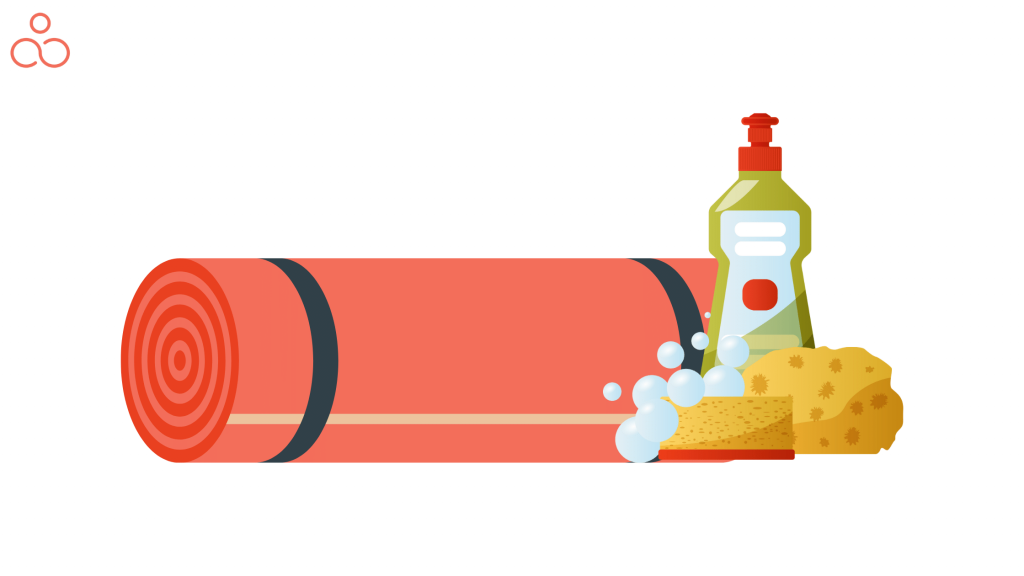
Familiarising with the fabrics used in Manduka mats is essential, as each requires a distinct approach to properly cleaning and sanitising. Let’s guide you through this.
• GRP® Series
GRP and GRP Lite are mats made from a combination of PU and rubber. The mats are designed to absorb moisture and offer maximum grip as they get wet. Some pro series mats are: GRP, GRP Lite, and Adapt.
Use and care:
- Utilise Manduka’s GRP Yoga Mat Restore to keep your mat in top condition, clean it and prevent any build-up.
- Start by wetting a cloth with water and squeezing out the extra.
- Pump the foam onto the damp cloth, press down, and wipe the mat’s surface.
- This will help maintain its peak performance and extend its life.
• PRO Series mats
They are ideal for the highest-level performance and cleanliness. Our closed-cell material prevents liquids and bacteria from seeping in, making cleaning them effortlessly. Some of the pro series mats are PRO, PRO Travel, and Prolite.
Use and care:
- Keep your PRO mat in top shape by wiping it down after every workout with Manduka’s Mat Wash & Refresh.
- Give the whole mat a good spritz.
- Use a spotless cloth to dry the mat before you roll it up or use it.
- Never submerge, shower, or soak your mat in water.
• eKO® Series
These rubber mats are a great choice because they are natural and closed-cell. Some of the eKO series mats are: eKO, eKO Lite, eKO Superlite. Cleaning these mats necessitates extra attention and care since they are highly absorbent.
Use and care:
- To keep your eKO® mat clean, spray it with Manduka’s Natural Rubber Mat Wash or TRIBE Eco Clean.
- Then wipe it down with a soft cloth.
- An alternate cleaner can be made by mixing 10% white vinegar and 90% water in a spray bottle.
- To store your mat, roll it up with the closed-cell side facing outward after its scorched.
• Foundation Series
These mats have a TPE closed-cell design, meaning nothing can penetrate them, and they can always be properly cleaned on the surface. Some pro series mats are: Begin Mats, Manduka X, and EQUA.
Use and care:
- Keep your Manduka X mats fresh and clean using Manduka’s Mat Wash & Refresh.
- For best results, spray the entire surface.
- Applying a damp cloth and wiping the mat down might be more accessible.
- If needed, use more mat wash.
Why Cleaning Your Manduka Yoga Mat Matters?
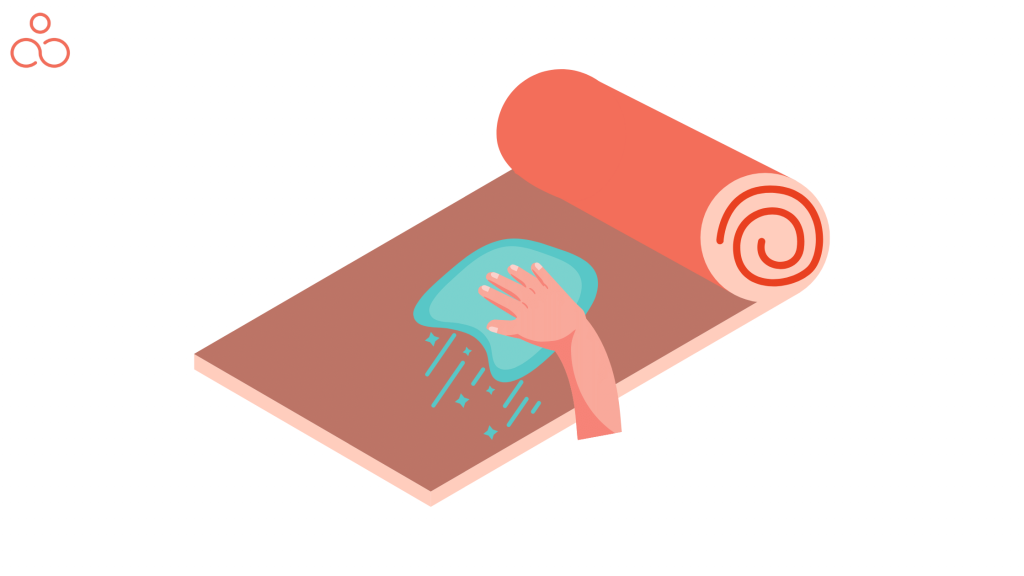
Ever noticed a bit of dirt on your yoga mat? Sure, we can clean it off and carry on with our practice. But what about all the icky germs and sweat we can’t see? Yuck! Bacteria can grow and spread if we don’t regularly clean our mats. Not exactly the kind of zen vibes we’re looking for. Moreover, it’s worth it to take a few minutes to swab your yoga mat down after every practice and give it a more thorough clean every month-ish. Wiping down your mat removes the sweat and dirt it has collected and helps ensure your mat stays grippy and can last longer.
How often should you clean it?
Every time you use your mat, you leave behind a layer of skin and sweat. And over time, that can attract bacteria and cause a not-so-pleasant smell. Here’s a tip from Manduka: Clean your yoga mat after every session, especially if you tend to sweat a lot. You can use their helpful cleaner sprays or make a DIY solution. Always let your mat air dry after both your practice and after you’ve cleaned it – that’ll keep mould and foul odours at bay. As a general rule, give your mat a good scrub when it looks or smells a bit off – it needs some TLC.
FAQ’s
How often should you disinfect the Manduka mat?
Attending yoga class is more than a way to get those muscles aching. It’s important to sanitise your mat after it’s been exposed to bacteria to protect yourself from potential infections and get rid of oils and dirt. Dishwashing soap is excellent for yoga mats as it contains chlorine, which helps to get rid of any icky bits. To keep your mat in tip-top shape, remember to give it a good scrub and sanitise it daily. Remember to rinse it properly after the disinfectant has done its job. Also, please remember that disinfectants should only be used on non-porous surfaces. Mats used for hot yoga should never be sprayed with disinfectant as the liquid can seep into the material and be difficult to fully remove.
Is there a way to avoid cleaning your yoga mat?
Preventing it is often the best solution. You can keep your mat clean and dry during practice using a yoga towel. Not only do they absorb sweat and dirt, but they also help you to stay in place, especially during hot yoga. You can keep your mat clean with a yoga towel and make the most of your practice.
Can I do yoga without Manduka yoga mats?
Doing yoga with a Manduka mat is easy, but it can be risky if you’re not careful. It all depends on the type of yoga you practise and your needs for cushioning, space, cleanliness, and environmental friendliness. If you’re looking for an enduring yoga mat, consider investing in a Manduka mat – its closed-cell construction makes them resistant to moisture, sweat, and dirt. They’re pricey, but their closed-cell construction keeps water, sweat, and grime off your mat. It’s worth the investment!
Why do you salt your Manduka?
You may need to break it in if you just got a Manduka Pro. You can sprinkle some generous coarse sea salt all over your mat, leaving it for a day, and then adding a bit of water, rubbing the salt in, and wiping it off. This process helps to increase the grip on your mat.
How long can bacteria live on yoga mats, and how to get rid of them?
Bacteria and viruses are a real pain! They can hang around on your yoga mat for hours or even days, with the flu virus being complicated to eliminate. To keep your yoga practice safe, we’d recommend using our Botanical Mat Cleaner, a natural plant-based solution with thymol that kills 99.9% of bacteria. You could also try white vinegar, which has antibacterial properties. Create a simple cleaning solution by combining equal parts white vinegar and water, then spray both sides of the mat and give it a quick wipe. You’ll have a sparkling clean mat in no time!
Conclusion
When all is said and done, the choice to cleanse your Manduka is yours to make in the end. If you have the time and inclination, you can always whip up a DIY solution; however, if you’re pressed for time, a readymade cleanser might be the better option, just make sure to clean your mat at least once a week, and remember to scrub the common touch points with an extra solution in order to keep your mat look as good as new! While keeping that in mind, go whichever way you want to go.

